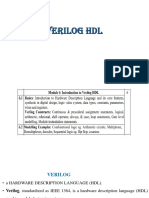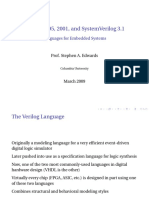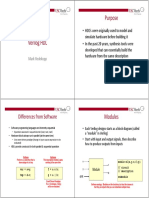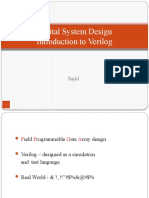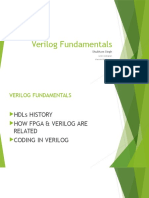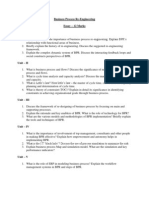0% found this document useful (0 votes)
53 views32 pagesVerilog Lecture
The document provides an overview of Verilog basics including:
- Lab evaluation criteria such as pre-lab tasks, lab tasks, reports, and viva exams.
- Verilog is a hardware description language used to model digital circuits. Modules are the basic building blocks and can be interconnected hierarchically.
- Verilog supports different levels of abstraction from gate-level to behavioral modeling using constructs like always blocks and initial blocks along with procedural assignments. Simulation and synthesis are used to verify and map Verilog code to physical circuits.
Uploaded by
Haris AliCopyright
© © All Rights Reserved
We take content rights seriously. If you suspect this is your content, claim it here.
Available Formats
Download as PDF, TXT or read online on Scribd
0% found this document useful (0 votes)
53 views32 pagesVerilog Lecture
The document provides an overview of Verilog basics including:
- Lab evaluation criteria such as pre-lab tasks, lab tasks, reports, and viva exams.
- Verilog is a hardware description language used to model digital circuits. Modules are the basic building blocks and can be interconnected hierarchically.
- Verilog supports different levels of abstraction from gate-level to behavioral modeling using constructs like always blocks and initial blocks along with procedural assignments. Simulation and synthesis are used to verify and map Verilog code to physical circuits.
Uploaded by
Haris AliCopyright
© © All Rights Reserved
We take content rights seriously. If you suspect this is your content, claim it here.
Available Formats
Download as PDF, TXT or read online on Scribd
/ 32






